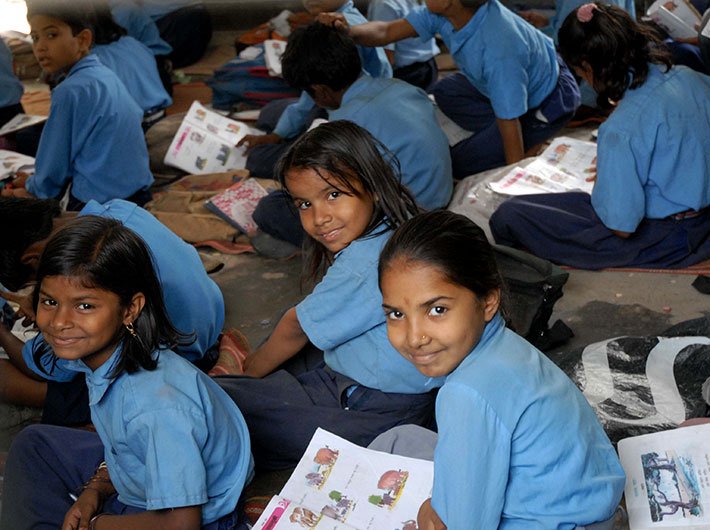The status reports by the states shows poor implementation and toilets are low a priority
'No toilet in school, UP girl out to relieve herself gangraped by seniors,' read a newspaper headline on March 30. The class V girl student was allegedly raped by two seniors from her school, when she went out to relieve herself in a field outside her school. This government school in Rae Bareli district of Uttar Pradesh has no toilets.
This state of affairs prevails despite Swachh Vidhyalaya programme. On August 15, 2014, prime minister Narendra Modi promised that every school in the country will have toilet facilities by 2015 Independence day. But India is nowhere near the target of providing dignity and hygiene for the students.
The work on the school toilets started with 30,000 toilets initially on October 2014 under Swachh Vidyalaya programme. The target was to build 80 percent toilets by March 31, 2015. As per status reports submitted by the states not even 30 percent has been achieved.
A total of 19, 806 school toilets have been constructed across the country.
Under the Swachh Bharat Mission launched on October 2, 2014, a total of 2,57,008 new toilets are to be constructed, out of which 1,02,717 toilets would be for girls.
Seven months after the launch and five months to the deadline, the progress report submitted by states for the financial year 2014-2015 suggests that the construction of school toilets is not in the priority list of many states.
According to the reports, Goa, Chhattisgarh, Nagaland, Puducherry did not even attempt to build school toilets in 2014-2015. Uttar Pradesh and Chhattisgarh are a step ahead and do not even mention the toilet needs in their implementation plan for the year.
Other states which built few toilets have very slow pace of work. For example, Bihar could build only 496 toilets against a target of 7126 for the financial year 2014-15 and with that it could achieve only 6.96% target.
While Goa mentioned no need for the school toilets in its annual implementation plan, it has no anganwadi toilets against a requirement of 100 toilets. Anganwadis are meant to educate and look after the health of children in the age group of 0 to 6 years.
State-wise report on school toilets
Andhra Pradesh (85), Arunachal Pradesh (248), Assam (68), Bihar (496), Chhattisgarh (0), Goa (0), Gujarat (0), Haryana (1921), Himachal Pradesh (182), J&K (3), Jharkhand (1352), Karnataka (911), Kerala (294), Madhya Pradesh (66) Maharashtra (10), Manipur (0), Meghalaya (2271), Mizoram (35), Nagaland (0), Odisha (401), Puducherry (0), Punjab (0), Rajasthan (871), Uttar Pradesh (1), West Bengal (6617).
A 2012-2013 report by Unified District Information System for Education (UDISE), HRD department revealed that as many as 1,01,443 schools have no toilet for girls while 1,52,231 schools do not have toilet facilities for boys. The same report cited that approximately 9.28 lakh students in Uttar Pradesh and 6.44 lakh students in Chhhattisgarh have no access to toilets in schools. The Swachh Vidhyalaya scheme identified the need of 2,20,380 toilets (1,54,291 for girls and 1,02,717 for boys). The scheme also declared 1,62,571 toilets defunct in 96,336 schools across the country.
Click here to see full status report
What is Swachh Vidhyalaya scheme?
Every school in the country must have: Separate toilets for boys and girls, with one unit generally having one toilet (WC) plus 3 urinals. The ratio to be maintained is preferably one unit for every 40 students.
For information on the scheme, read here

